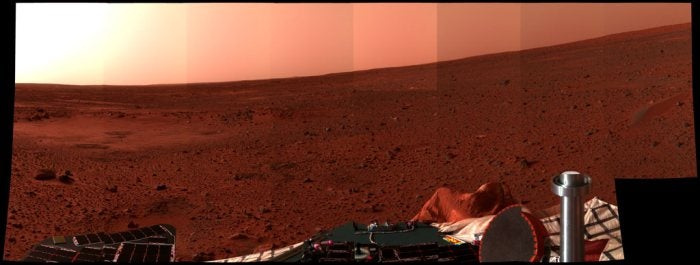Proposed Hopping Mars Rover Will Harvest Its Own Fuel
The next generation of Mars rovers may not rove at all, instead bouncing around the planet while harvesting carbon dioxide...

The next generation of Mars rovers may not rove at all, instead bouncing around the planet while harvesting carbon dioxide for fuel.
A new Mars hopper concept involves a carbon dioxide collection and compression system, which would take advantage of CO2 phase changes to produce thrust. The Martian atmosphere is rich in CO2, so a robotic hopper that can harvest indigenous fuels would provide greater range while also solving the problem of fuel transport.
Hugo Williams and colleagues at the University of Leicester in the UK propose using a radioisotope decay generator, used in spacecraft for decades, to warm a “thermal capacitor” and to power a CO2 compressor.
The system would suck up CO2 from the atmosphere, use heat from radioactive decay to put the gas under extremely high pressure until it liquefies, and then store it in a special tank. The hopper would also store extra radioactive heat in a thermal capacitor. When the hopper needs to move, the liquified CO2 comes in contact with the capacitor, turning it back into a gas; the expanding CO2 is used as a thruster to launch the hopper and softly land it again.
Williams and colleagues have been working on propulsion ideas for a Mars lander project including the aerospace giant Astrium, BBC reports. Hoppers could conceivably move farther and faster than NASA’s Spirit and Opportunity rovers — Spirit is mired in the sand and Opportunity just hit the 25-kilometer (15.5 mile) mark after seven years of driving.
The team is not the first to propose a planetary hopper; a team from MIT and Draper Laboratory have proposed a planetary hopper that looks like our beloved Parrot AR.Drone, using ducted fans to control the hopper’s height and a compressed nitrogen system to move it laterally.
But the British hopper solves the key problem of fuel, by taking advantage of Mars’ abundance of CO2.
A paper on the hopper is outlined in the Proceedings of the Royal Society A.